Free As A Bird
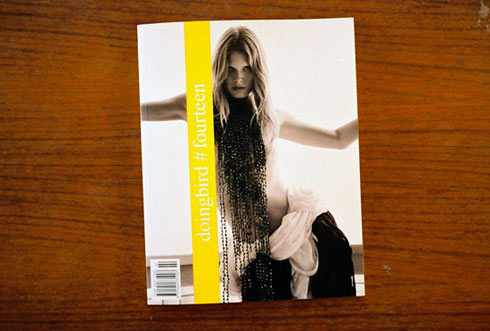
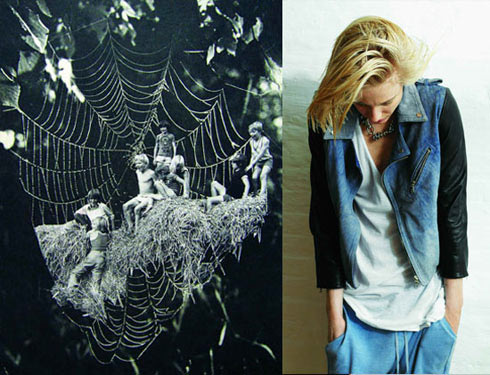
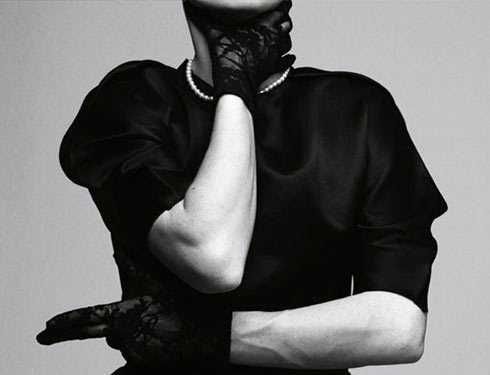
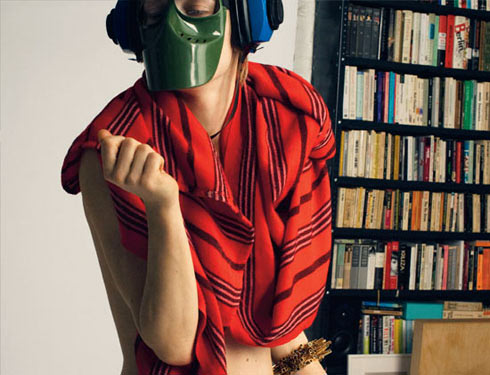
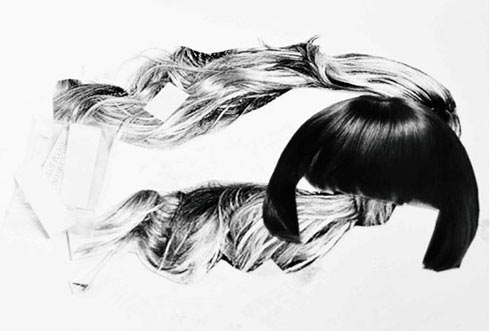
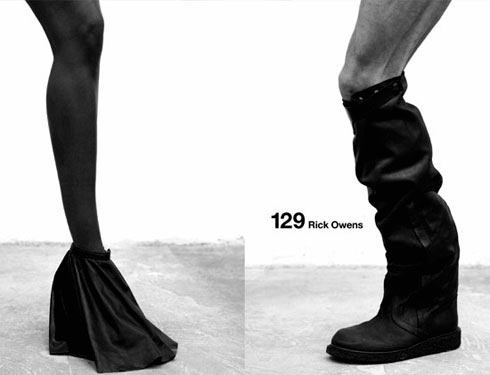 Words: Joseph Allen Shea Images: doingbird # fourteen, Alex Rose, Amy Troost, Danko Steiner, Owens Corp & Asha Mines
Words: Joseph Allen Shea Images: doingbird # fourteen, Alex Rose, Amy Troost, Danko Steiner, Owens Corp & Asha Mines
Biannual fashion and culture periodical doingbird is in a unique position. Independent, far from the fashion capitals and without a concrete staff, founders Malcolm Watt and Max Doyle make room within the pages of their book-like quality driven publication for this earth’s most forward thinking and renowned creators, fashionable iconoclasts such as Ann Demeulemeester, Hedi Slimane, Helmut Lang, Lee Ranaldo, Bruce Labruce and Nobuyoshi Araki. Between navigating technological advances to retain only the most important aspects of the printed format, avoiding the constraints of clocks and locating the cultural cartographers, editor Malcolm Watt gave The Blackmail an insight into creating from the clink.
Joseph Allen Shea: Your magazine’s title is Cockney slang for being in jail. Could you tell me the story behind your name?
Malcolm Watt: Max Doyle [co-founder] lived in Hackney in East London from 1990-1999 and before returning to Australia he felt as if he was about to embark on the equivalent of jail time. The phrase is interesting rhyming slang and when we started the magazine we liked the anti-establishment vibe the title evokes.
JAS: With the rapid changes to print and web publishing, are you fearful or excited by what is to come?
MW: I’m both. Initially I see a downgrading of creativity when publications are created specifically for the web because a lot of content doesn’t translate well. Images can feel too slick, cold and artificial. On the other hand a printed book, magazine, poster or an LP can convey something tangible with a clearly human touch. You can love the content of a website or blog for its immediacy but it’s untouchable and that can be its failing.
Of course the speed you can access online content is what makes the web so amazing. The things you can find (be it for entertainment or research) makes the internet completely necessary but it seems to stifle creativity that’s honest and elemental in that indelible: ‘this is a drawing’ or ‘this is a polaroid’ way that only print can achieve. It doesn’t worry me that over time there will be less printed magazines. What’s published will have to be justifiable or no one will be interested in what it’s saying.
As online content progresses you can only imagine how refined a form it could take. The potential of the interactive nature of the internet and how sight and sound could meld with moving imagery within the pages of a magazine is very interesting.
JAS: You are an independently published magazine. Can you tell us a little about the benefits and short-comings on doing things yourself?
MW: We publish whatever we feel works within the confines of the magazine. This is the most obvious benefit of doing things your own way! The lack of funds that is the result of being a small entity makes it difficult to commission content that requires a budget to be implemented successfully.
In the current economic climate independent magazines need to become braver and more eccentric rather than giving in and becoming more insipid and palatable.
JAS: I noticed your distributor Selectair categorise your idiosyncratic magazine as ‘Women’s Fashion’. How do niches and categories help or hinder doingbird?
MW: I think you have to be categorised to fit into most systems (even if they don’t explain what you actually do) as it helps people understand your title in the most simple, straightforward way. Words might misinterpret what you’re trying to do but if people see something unconventional or unexpected they’ll quite quickly come to their own conclusion as to what’s actually in front of them. You want a magazine to be as cross-generational, ambiguous, self-indulgent and as non conformist as possible so people really like or dislike what they see.
JAS: doingbird is not markedly anchored to a geographical location. Is this intentional?
MW: We don’t want to feel like the product of one particular place because we want to be a lot of things to different people. Some of our readership wouldn’t even be interested in what we have to say (in the written sense) as they don’t speak English (doingbird sells in Paris, Tokyo, Seoul, Germany, Sweden, Italy as well as in the United Kingdom, Australia and the United States).
JAS: Do you believe there to be a responsibility to promote the fruits of the soil in your area or is that just nepotism?
MW: You’ll always be drawn to the ideas and output of certain people but it’s not based on geography – it’s just something that connects you to what these individuals say or do regardless of whether they are based in St Petersburg or LA or wherever. We don’t want to be too short-sighted in what we publish or appear too one-dimensional in our view of the world. Ideally you want to be here, there and everywhere.
JAS: As well as editor you are also the art director of doingbird. The look of the magazine is refined and direct. You use Quark Xpress, is there a reason for sticking with older, simpler software?
MW: What I choose to feature is not my work, it’s other peoples output so I need the magazine to be seen as functional and straightforward and that’s all. I want to present the content without needing to resort to overt design. If the design is seen as banal that’s fine by me.
JAS: With international time zones, seasonal availability and Australia’s distance from Europe and New York, is it difficult to produce a biannual magazine? How important is timing?
MW: Everyone who works on the magazine works full-time doing other things so it’s tricky finding the time to produce two editions each year. Fashion seasons and news content gives your pages an expiry date and this effects how we’re perceived but I think that when you publish infrequently you’ve decided to strive for a longevity in the work you show and hopefully this gives your readership a reason to archive the magazine and look forward to an upcoming issue. Difference in time zones forces you to work to European and US times a lot which means communicating at ALL hours of the night. The expense and ethics of air freighting the magazine overseas is a costly exercise and this also dictates how quickly people get to see an issue once it’s completed.
JAS: Without a regular staff you are in a unique position to pick and choose creative teams. Would it be accurate to liken your role to curating? How does not having a regular staff affect the content of your magazine?
MW: You’ll always rely on certain people to suggest content. It could be something self-created such as a photographer wanting to do a portrait series or it might be someone suggesting something that’s iconic and archival that they may have recently discovered or perhaps have always loved. If the work we reproduce is art to begin with then we are curating (in a sense) within the confines of a magazine just as someone does when selecting work to show within a gallery space. Work that I select personally has to be as considered as possible but at the same time I don’t want anyone to feel that what is being presented is particularly highbrow or vitally important – it’s only a magazine we’re talking about after all.
JAS: Run me through the process of putting together a doingbird fashion story abroad from your desk in Sydney.
MW: When I decide to pursue a story with a creative I’m interested in featuring I’ll contact them with our deadline and we’ll discuss the direction of the shoot and options for the stories model and the hair and makeup team. If it’s a cover I’m pursuing we may suggest labels that would work well but that’s usually the extent of my input. Some people have strong opinions in regards to the final edit and layout of their stories whilst others prefer to collaborate with me or will leave me to interpret the layout as I think it will work best.
JAS: ‘Good guys never die’ or ‘Here for a good time, not a long time’?
MW: I think plenty of things get better with age or maybe I just like looking back at things from the past so perhaps good guys never die?
doingbird is available now from the Curated Temporary Bookstore and will be in stores mid July
For your chance to win the latest issue of doingbird just email [email protected]
Next Article



